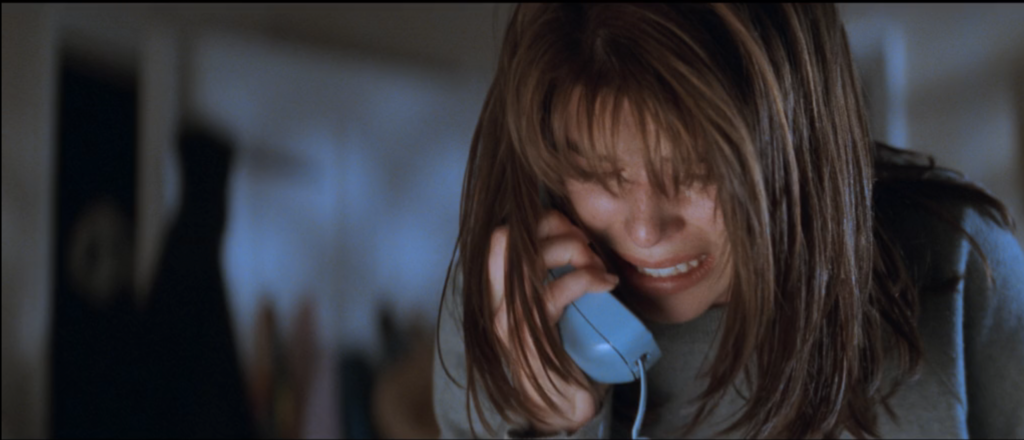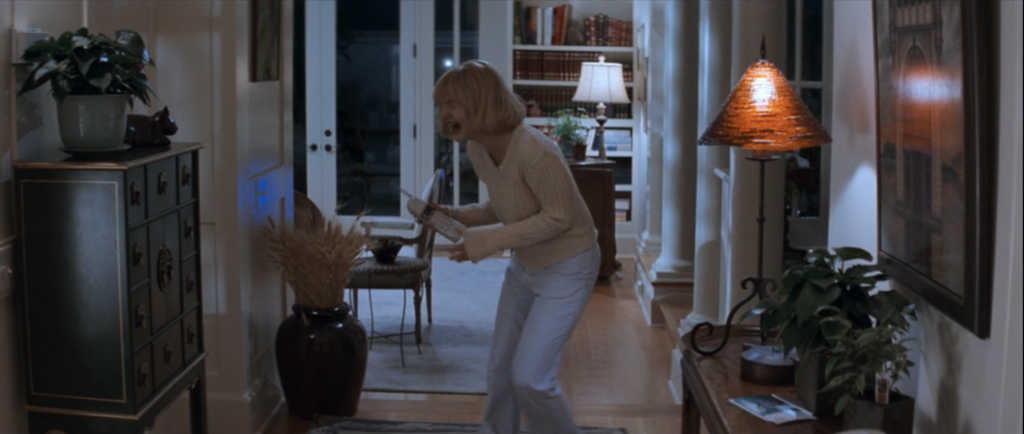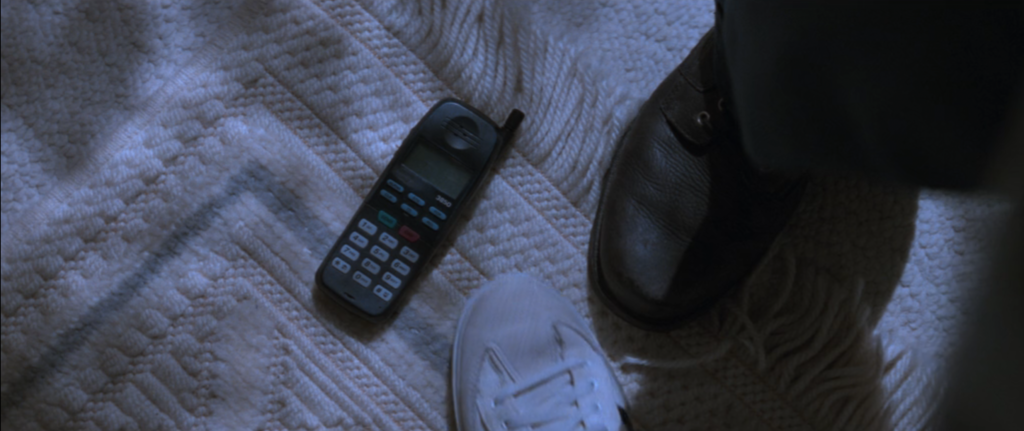|Chelli Riddiough|

Scream plays at the Trylon Cinema from Friday, October 6th, through Sunday, October 8th. Visit trylon.org for tickets and more information.
The first sound you hear in the 1996 horror film Scream is a ringing telephone. Not the Apple ringtone everyone has, not a tinny song emanating from a speaker. No: it’s a bold, loud ring, the type that makes you think of your grandparent’s doorbell or a hammer-bell alarm clock. It’s the sound of a landline, from back when everyone had landlines. When you had to let the phone off the hook so it wouldn’t wake you up at night, when the red light of the answering machine let you know you missed a call, when a sneaky younger sibling could pick up another handset and eavesdrop on you. In the age of the iPhone, it’s mind-boggling how different a time this was.
There was a lot of mischief in this era of the telephone, when cordless phones were well-established but cell phones were still the Wild West. You didn’t always know who was calling you, or who was picking up on the other end. Voices could be distorted; imitations made. My sister and I have such similar voices that when I was in third grade, her best friend called and gossiped at me for several minutes before catching on. Wrong numbers could be dialed. In order to avoid speaking to someone you didn’t want to speak to, you had to screen your calls. Picking up meant talking to someone without always knowing who. In 1996, caller ID was not yet common. Dialing *69 would allow you to figure out the number of whoever called you last, but that wasn’t in everybody’s bag of tricks.

Scream illustrates almost all the ways that landline telephone calls can go wrong. The sound of a ringing phone is the film’s refrain of terror—more than an actual scream, more than the sound of a slash knife, more, even, than Matthew Lillard’s annoying guffaw. In Scream’s opening kill scene, the telephone’s ring is at turns intriguing, annoying, and terrifying. Drew Barrymore plays Casey Becker, a teenage girl who’s home alone one night, with nothing other than Jiffy Pop and her maroon lip liner to keep her company. The telephone rings and she answers. What goes from a “wrong number” situation turns into a “flirting with a stranger” situation. There’s an excitement to the anonymity, much like Chatroulette. Unlike Chatroulette, though, Casey isn’t met with a masturbating stranger—she’s met with a death threat. If she can’t correctly answer horror movie trivia, the killer on the line will gut her like a fish. Cordless phone in hand, Casey runs around the house, fruitlessly locking all the doors, but in the end, she doesn’t make it. The killer stabs her and drags her away, the telephone still hanging from her hand. Her parents arrive home and, in an attempt to call 911, end up hearing her dying gasps. Then the call is cut.
Technology is a funny thing. It creates jobs and destroys jobs, introduces new ways to connect and alienates us, adds convenience and adds annoyance. Sigmund Freud summed up this paradox well in Civilization and its Discontents: “If there had been no railway to conquer distance, my child would never have left town and I should need no telephone to hear his voice.” In Scream, the telephone operates as both a portal to terror and, theoretically, a pathway to safety. Calling the cops, calling a friend for a safe place to spend the night… the characters in Scream try to make the right kind of calls, but the killers, with their cell phones and their masks, are always one step ahead.

The Scream franchise is still alive and well, and they’ve done their best to integrate changing technology into their scripts. But part of the reason the 1996 Scream is such a classic is because of its particular time period when cell phones—a crucial tool for the killer—were still uncommon enough that the town sheriff views it as suspicious for a teenager to own one. In that era, the details surrounding cell phone technology were fuzzy enough for some creative plot twists (“We cloned his cellular”). Yet Scream wasn’t the first horror film to use the telephone as a gateway to terror. 1974’s Black Christmas centers on a sorority receiving menacing crank calls on its house telephone. Part of the reason I found that movie cheesy when I watched it in the 2010s was the very concept of a house telephone. One phone? For a whole gaggle of coeds? That attaches to the wall and can’t be moved? They should have just thrown it out the window, killer be damned. The 1982 film Poltergeist features the television as its gateway to terror but also shares parallels to Scream: the inability of domestic life to keep us safe, the permeability of the household to danger, the failure of technology to stay in its goddamn lane. Just two years after Scream, 1998’s Ring involves both the television and telephone in its horrorscape.
While more recent horror movies have also played with technology in interesting and scary ways (see 2020’s Host and 2022’s Influencer), there’s something much scarier about these bulky objects that we bring into our homes, not knowing what they’ll do to us. As our gadgets get tinier and more ubiquitous, I’ll be interested to see how horror writers find ways to cast technology as a villain unto itself. At the end of Poltergeist, the traumatized but intact Freeling family wheels their hotel room TV outside and locks the door. That’s not really an option anymore. I mean, would you get rid of your telephone?
Edited by Finn Odum
